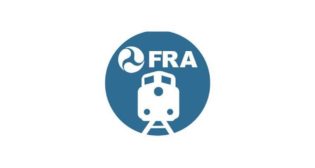
PHMSA to DOT-111 defender: Justify Bakken testing
Written by David Thomas, Canadian Contributing EditorThe Department of Transportation hazardous materials regulator has quickly challenged the refinery lobby's contention that Bakken crude falls comfortably within existing "Class 3 Flammable Liquid" and should continue to be transported in the DOT-111 general purpose tank car.
In a May 21, 2014 letter to Charles Drevna, president of American Fuel & Petrochemical Manufacturers, the top executive of DOT’s Pipeline and Hazardous Materials Safety Administration requested details of the testing methodologies and sampling techniques that led the refiners’ special interest group to call for a halt to development of a next-generation tank car.
The refiners want a thorough analysis of railroad derailments before any new design to replace both the DOT-111 and the railcar industry’s self-imposed CPC-1232 specification. Keeping the cars on the track should be the priority, says the refiners lobby, whose members operate much of the DOT-111 fleet.
PHMSA Administrator Cynthia Quarterman has asked the organization to justify each of the 1,400 tests it reported in a May 14 submission, along with its contrarian conclusion: “Bakken crude oil was compared with other light crude oils and determined to be within the norm in the case of light hydrocarbon content, including dissolved flammable gases. Measured tank car pressures show that even the older DOT-111s authorized to transport Bakken crude oil are built with a wide margin of safety relative to the pressures that rail tanks may experience when transporting Bakken crude oil.”
Quarterman asks the refiners’ group to support its analysis with specific data on “each data sample cited in your report.” Specifically, the regulator wants to know:
“What method of sample selection and collection was used?
“On what date, from what sources, and within what portion of the transportation system were samples drawn?
“What methods of quality control were used at the collection point and at the laboratory to ensure accuracy and consistency across the samples and results?
“Why were some samples subjected to a broader range of testing (e.g., initial boiling point, flash point, vapor pressure) than other samples?”
The refiners’ relied on their data analysis for their circular argument that because Bakken crude is properly classified as a flammable (not explosive) liquid, it does not need a new classification and should continue indefinitely to be approved for shipment in pre-2011 DOT-111 cars.
“As the standards are today for flammable liquids, Bakken crude fits right in, and the DOT-111 cars should be fine,” Drevna told Railway Age earlier this month.
Regulators in both the U.S. and Canada have asked the United Nation’s hazmat agency to review the classification of Bakken crude and the validity of classification criteria. Canadian safety investigators reported that the Bakken crude that detonated in the pile-up of DOT-111s on July 6, 2013 at Lac-Mégantic, Quebec, was as explosive as gasoline. U.S. regulators followed with advisories that Bakken crude was unusually volatile and its carriage in vintage DOT-111s should be avoided when better cars are available.



